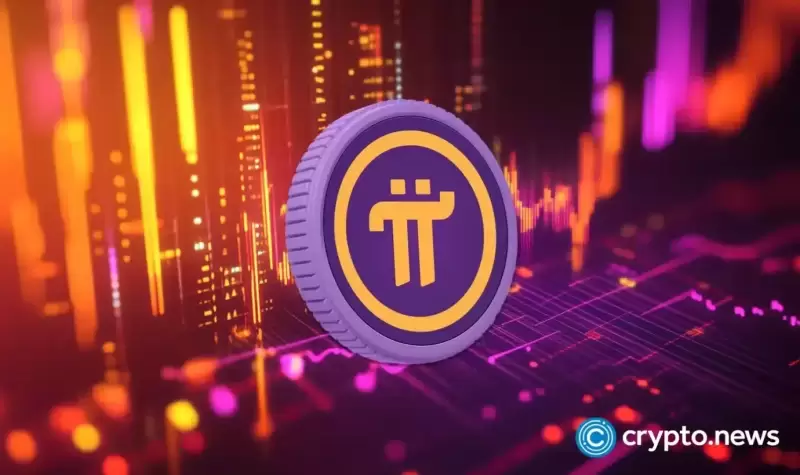 |
|
 |
|
 |
|
 |
|
 |
|
 |
|
 |
|
 |
|
 |
|
 |
|
 |
|
 |
|
 |
|
 |
|
 |
|
Cryptocurrency News Articles
Overcoming Blockchain's Scalability Hurdles with Innovative Solutions
Mar 22, 2024 at 09:49 pm
The blockchain landscape is grappling with scalability issues as demand for its applications increases. Transaction delays and inefficiencies hinder widespread blockchain adoption, prompting the pursuit of higher transaction volumes while maintaining efficiency. Scalability in blockchain refers to a network's ability to handle increasing transactions capably and promptly, balancing security and decentralization. Current blockchain systems face significant scalability challenges, leading to longer processing times and higher costs, hindering their practicality for high-volume applications.

Overcoming Blockchain Scalability Barriers with Innovative Solutions
Introduction
The burgeoning blockchain landscape confronts a formidable challenge in scalability as demand for its applications soars. Transaction delays and inefficiencies pose significant obstacles to the widespread adoption of blockchains. Consequently, the pursuit of higher transaction volumes while maintaining optimal efficiency has become a paramount concern within the blockchain sphere.
Understanding Blockchain Scalability
Scalability in blockchain parlance denotes a network's capacity to handle an escalating volume of transactions efficiently and expeditiously. The ability of a blockchain system to scale up transaction processing, data storage, and node count effectively without compromising inherent attributes such as security and decentralization defines its scalability. Contemporary blockchain systems face the imperative of scaling up transaction handling capabilities to meet the growing expectations of users.
The Criticality of Scalability
Scalability is a crucial component for blockchain networks, especially given the expanding size and complexity of transactions recorded on the ledger. A blockchain that processes transactions swiftly and efficiently is essential to meet the burgeoning demands of users. Networks that lack the capacity to handle increasing transaction volumes face extended processing times and higher costs, factors that may diminish the blockchain's practicality for high-volume applications such as decentralized finance (DeFi) and supply chain management.
Identifying Scalability Hurdles
Scalability challenges manifest when blockchain networks are unable to process transactions promptly due to an increase in volume, leading to increased latency and transaction fees. Bitcoin, for instance, is constrained by its block size limit, typically processing 7 to 10 transactions per second, a stark contrast to conventional systems like Visa, which manage thousands of transactions per second.
The Blockchain Scalability Trilemma
The scalability trilemma presents a paradigm where achieving scalability, security, and decentralization simultaneously is a delicate balancing act, often requiring a compromise on one aspect to improve the others. The objective, therefore, is to strike an equilibrium between these pivotal blockchain elements, a task that is proving to be complex yet consequential for advancing blockchain growth.
Proposed Frameworks for Enhanced Scalability
The ongoing advancements in blockchain technology feature diverse strategies aimed at overcoming scalability issues, broadly classified into Layer 1 and Layer 2 solutions, scalable consensus algorithms, and hybrid models.
Layer 1 Scalability Solutions
Layer 1 solutions encompass modifications at the blockchain's core protocol level. Approaches like Segregated Witness (SegWit), sharding, and hard forking exemplify mechanisms to heighten transaction capabilities. SegWit optimizes block storage, while sharding compartmentalizes the network into more manageable fragments called shards, improving transaction speeds. Hard forks, although controversial, introduce substantial modifications to the blockchain's structure.
Layer 2 Scalability Solutions
Layer 2 solutions introduce supplementary protocols atop the core blockchain, meant to alleviate transaction loads from the main blockchain. State channels and sidechains, for example, facilitate off-chain transaction handling, which is later reconciled on the main blockchain. Payment channel networks like the Lightning Network have also shown potential in expediting transactions.
Revolutionizing Consensus Mechanisms
Blockchain networks are exploring variants of consensus mechanisms like Proof of Stake (PoS) and Delegated Proof of Stake (DPoS) to streamline the validation process, offering improved throughput and lower energy consumption. These novel methods represent a significant stride towards optimizing blockchain scalability.
Hybrid Solutions
Hybrid solutions represent a confluence of the aforementioned approaches—by combining sharding with Layer 2 enhancements or adopting consensus algorithms like the Satoshi Plus – a network can enhance transaction processing capability while safeguarding security and decentralization.
Interoperability Challenges
Scalability is also about interoperability—the seamless interaction among diverse blockchain networks. Frameworks like Polkadot and Cosmos are essential for allowing blockchains to work collaboratively, further mitigating scalability woes.
What Lies Ahead for Blockchain Scalability
The path towards a scalable blockchain is fraught with complexity, but the various solutions in play show promise for a future where blockchains can handle increasing volumes without compromising core principles. Businesses and organizations must remain vigilant to these advancements, adapting proactively to the evolving blockchain environment.
Conclusion
Scalability is a critical element for the widespread adoption and utilization of blockchain technology. The pursuit of scalable solutions has sparked innovation within the blockchain sphere, leading to the development of diverse strategies that address the scalability challenges. As blockchain technology matures and evolves, the implementation of scalable solutions will be essential for unlocking its full potential and realizing its transformative impact across various industries and sectors.
Disclaimer:info@kdj.com
The information provided is not trading advice. kdj.com does not assume any responsibility for any investments made based on the information provided in this article. Cryptocurrencies are highly volatile and it is highly recommended that you invest with caution after thorough research!
If you believe that the content used on this website infringes your copyright, please contact us immediately (info@kdj.com) and we will delete it promptly.
-

- Trump's New Global Tariff Regime Reshapes Investor Sentiment, Triggering Sharp Corrections Across Risk Assets
- Apr 04, 2025 at 03:00 am
- Market analysts say President Donald Trump's newly announced global tariff regime is already reshaping investor sentiment, triggering sharp corrections across risk assets.
-

-

-

-

-

-

-

-



























































